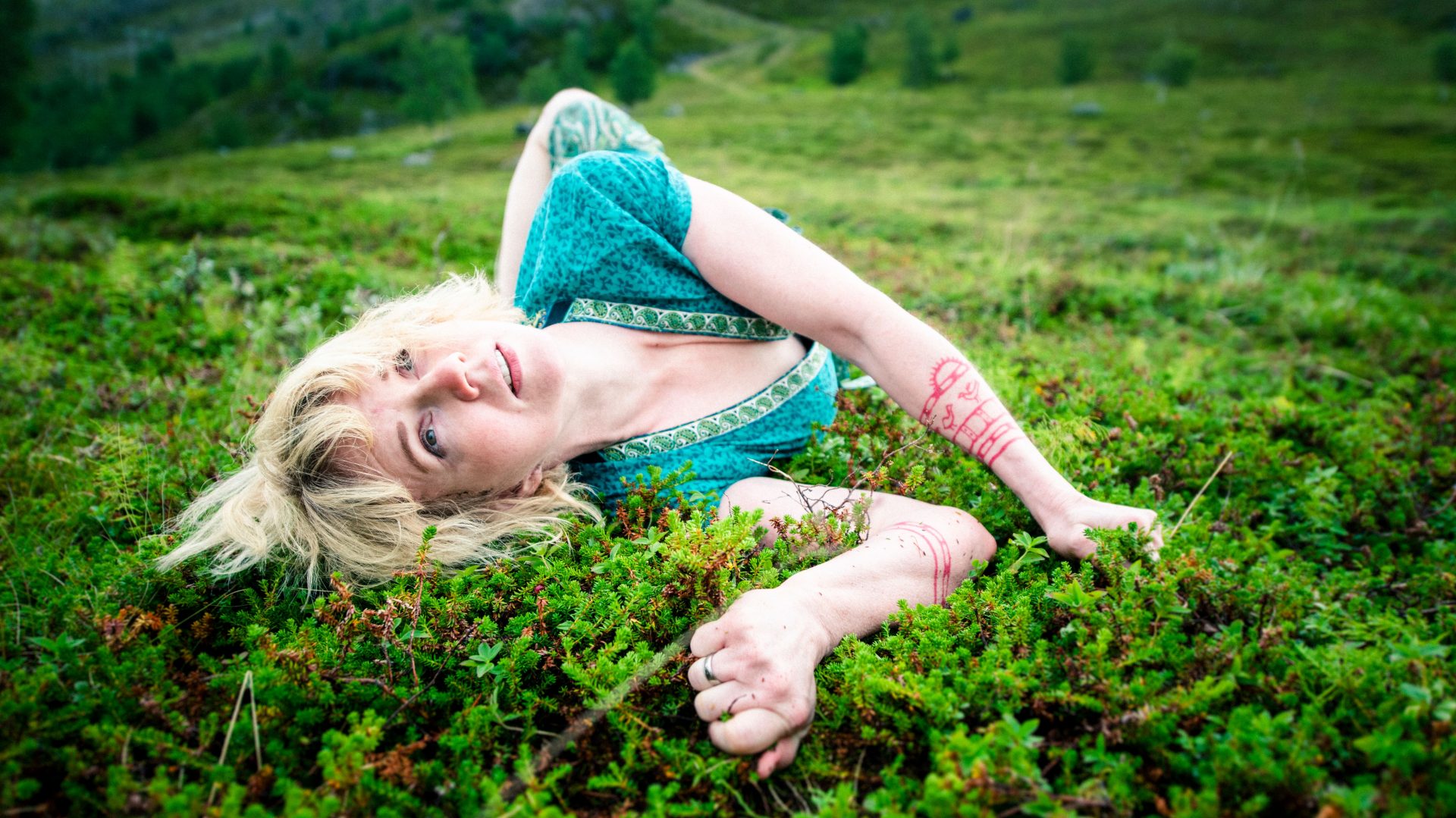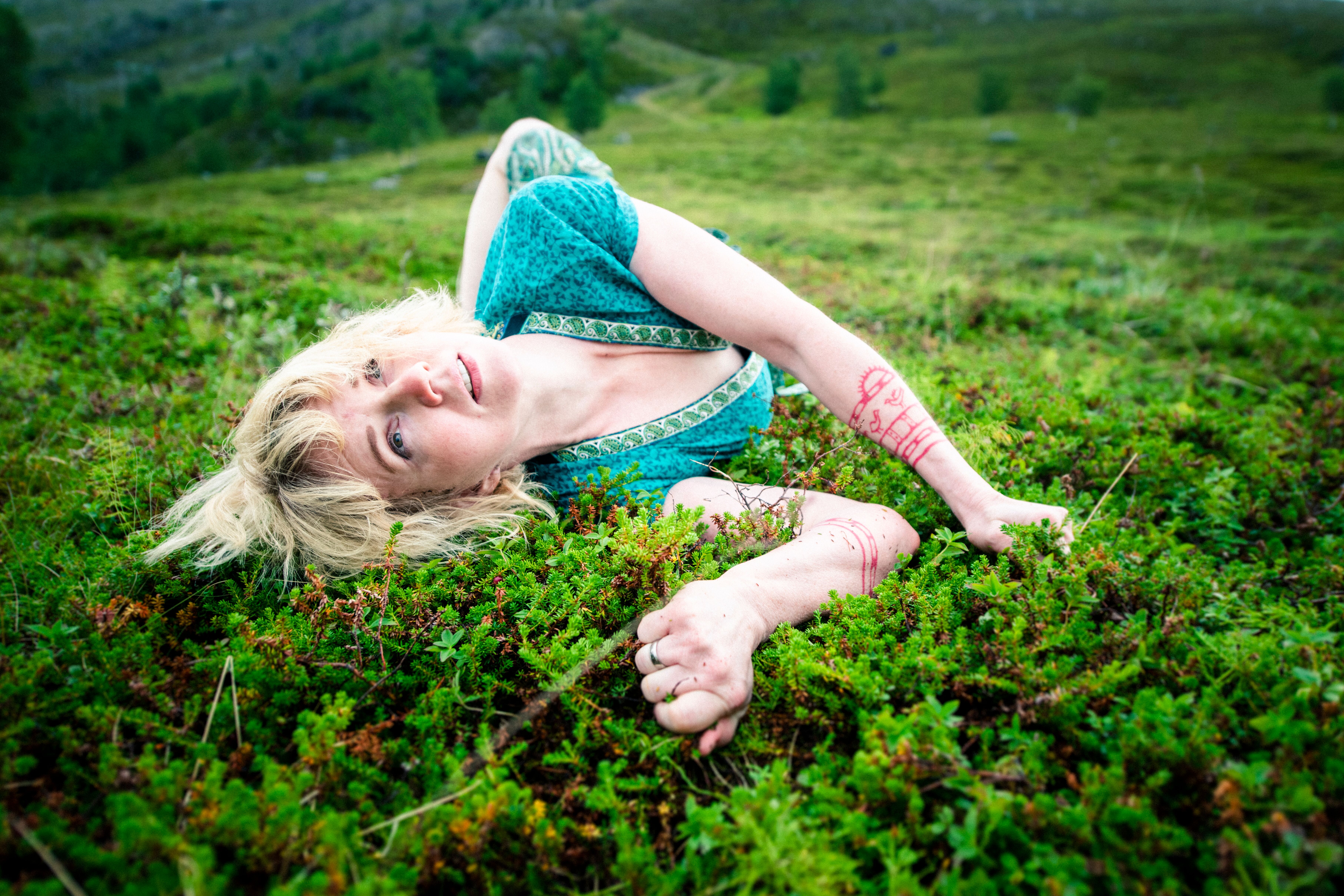I am not currently involved in any performing arts. However, I will be holding an exhibition at Feministuset in Trondheim/Tråante in May 2025, based on my latest performance, Sinte Gamle Samedamer. I am also working on a book based on the interviews I conducted with 18 Sámi women as part of the preliminary research for the performance. My aim with the performance and the book is to lift the voices of sami women and let them be heard everywhere.
Latest performances:
Sinte gamle samedamer
Urpremiere: Multiplie dansefestival Trondheim, mars 2022.
Spør Gresset – det vet
Stamsund Teaterfestival
Mai 2021
Fuglefjell
Utendørs barneforestillinger
Setesdalstunet i Kristiansand
Søgne Gamle Prestegård
Sverresborg Folkemuseum, Trondheim
Juli 2020
Oppdrag: Arkivet i Kristiansand
Samtaler, Holocaustdagene
Skin Remembers
Januar 2020
Da sola ble borte
Skole/barnehage-forestillinger
Februar 2020
Saráhkkás Tears
Skoleforestillinger
Februar 2020
Oppdrag: Ibrahim Fazlic
En muslimsk afro-joik på svensk i Norge
Rosendal Teater
20-22 februar 2020
Oppdrag: Nextdoorproject, Ingrid Tranum Velasquez
Vi er Norden
Teknisk Museum Oslo
Desember 2020
Spør gresset – det vet
Urpremiere
Kargenes, Kvalsund
7 sept 2019
Oppdrag: En muslimsk afro-joik på svensk i Norge
Ibrahim Fazlic
Rosendal Teater
Festspillene i Nord-Norge 2019
Norway Tour
Arv (Heritage)
Trondheim – Rockheim
25 februar 2019
Oslo – Trikkehallen på Kjelsås
01 mars 2019
Kristiansand – Teateret
02 mars 2019
Pop-up Gilde
Vinterscenen i Porsgrunn
9 februar 2019
Da sola ble borte
Rosegården Teaterhus, Kristiansand
23 november 2018 (lukket barnehagevisning)
24 november 2018
Julemarkedet, Steinerskolen i Trondheim
1 desember 2018
Don´t Pull Me Out
Trondheim Open
02 November 2018
Atelier Ilsvika
Da sola ble borte
Kilden Teater og Konserthus, Kristiansand
12 juli 2018
Pop-up-gilde
Stamsund International Theatre Festival
31 May/ 01 jun 2018
Sáráhkkás Tears
UBC Museum of Anthropology
Vancouver, British Colombia
Canada
Date: 1´st and 3´rd March 2018
Da sola ble borte (When the sun disappeared)
Trondheim Folkebibliotek
Date: 24 februar 2018
Heritage (Arv)
Hammerfest – Arktisk Kultursenter
Date: 6 februar 2018 kl 19.00
Seminar om samisk identitet i Hammerfest og Kvalsund.
Hammerfest Bibliotek
Dato: 6 februar 2018 kl 13.00
Envegsbillett (One-way-ticket)
Place: Bodø Kulturhus: Stormen
Date: 11´th December 2017
Heritage (Arv)
Place: Aranyak Natyadal Theater Festival
Date: 26´th October 2017
Heritage (Arv)
Place: Nandimuhk International Theater Festival
Date: 28´th October 2017

